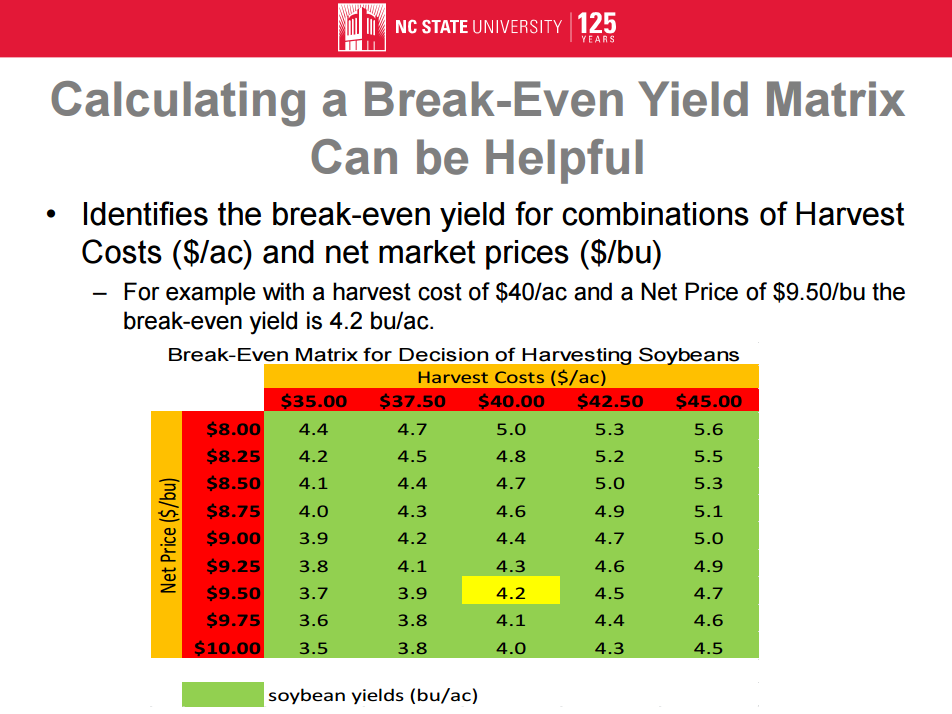With many water-damaged soybeans across the state, growers question whether to harvest these crops or not. NCSU’s Ag Resources Economist Dr. Nick Piggot has put together some suggestions for answering this question.
The first thing a grower needs to do is calculate what the break-even yield is to warrant combining the field. This is the minimum yield needed in order to make it economically profitable to harvest the damaged crop. To do this you need to consider two things.
- What is your harvest cost per acre?
For soybeans, Dr. Piggot estimates it to be about $40/acre. This cost includes the cost of putting the combine in the field and transportation costs to get the grain to the elevator.
2. What can you sell these beans for?
It is critical to pull a sample and take to your local grain buyer, so you can gauge the amount of quality discounts and have a reliable estimate of the price these beans can be sold for. You need to know this to calculate your break-even yield.
The break-even yield is the harvest cost ($/ac) divided by the market price ($/bu). So for example, if you have a harvest cost of $40/ac and a market price of $9.50/bu, the break-even yield is 4.2 bu/ac. In this case, if it looks like your field will yield less than 4 bu/ac, it is not worth it to harvest the beans.

Slide from Piggot (2016).
It is vital to work with your insurance adjuster! Establishing your appraised yield, damage discounts, harvest cost, and break-even yield if your soybeans have significant damage is critical in determining whether to harvest or not and achieve the largest return per acre.
It comes down to simple economics. If the revenue you would receive for harvesting the crop is less than the cost of doing so, you should not harvest. If you can harvest more than this break-even yield, it is more profitable to harvest the beans.
Throughout this decision-making process you should be in contact with your insurance agent. It is critical you work with agents and adjusters to ensure you comply with the claims process and have all the information you need to make the best-informed decision.
It is also important to consider where the flood water came from before moving forward with harvesting. If flooding was from “flood water” the crop is considered adulterated and should not be harvested. If flooding was from “pooled water” (rainfall directly on the field) you may harvest. Insurance adjusters can help clarify this.
References:
Piggott, N. 2016. Marketing flood-impacted grain in North Carolina after Matthew. NCSU. http://sfntoday.com/wp-content/uploads/2016/11/piggott_marketing_flooded_grain.pdf.
Garrison, R. 2016. To harvest, or not to harvest flooded crops. SFN Today. http://sfntoday.com/to-harvest-or-not-to-harvest-flooded-crops/.






